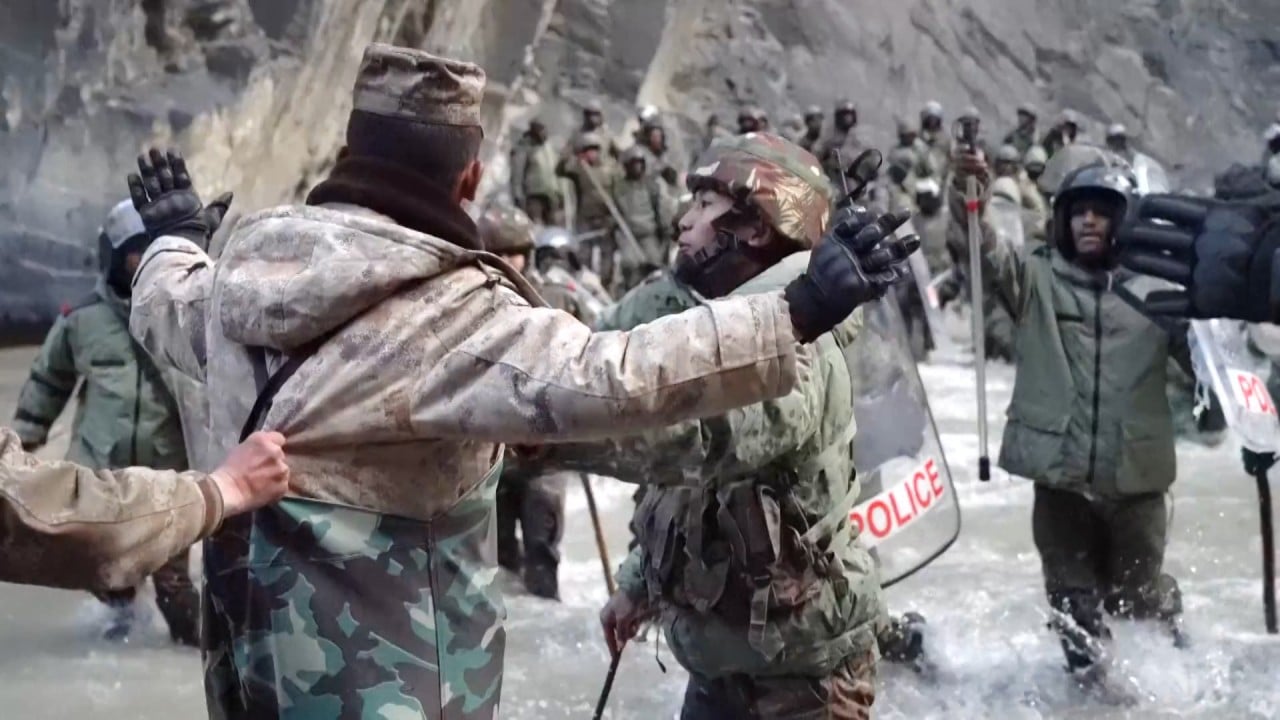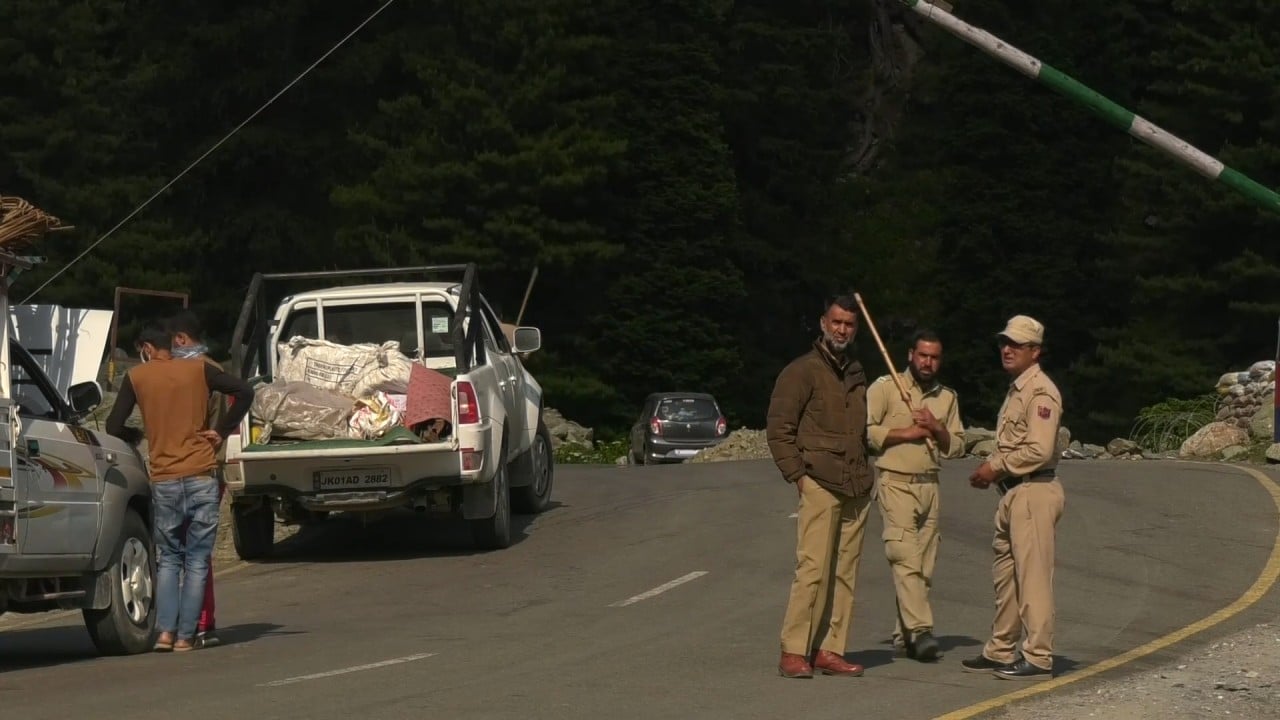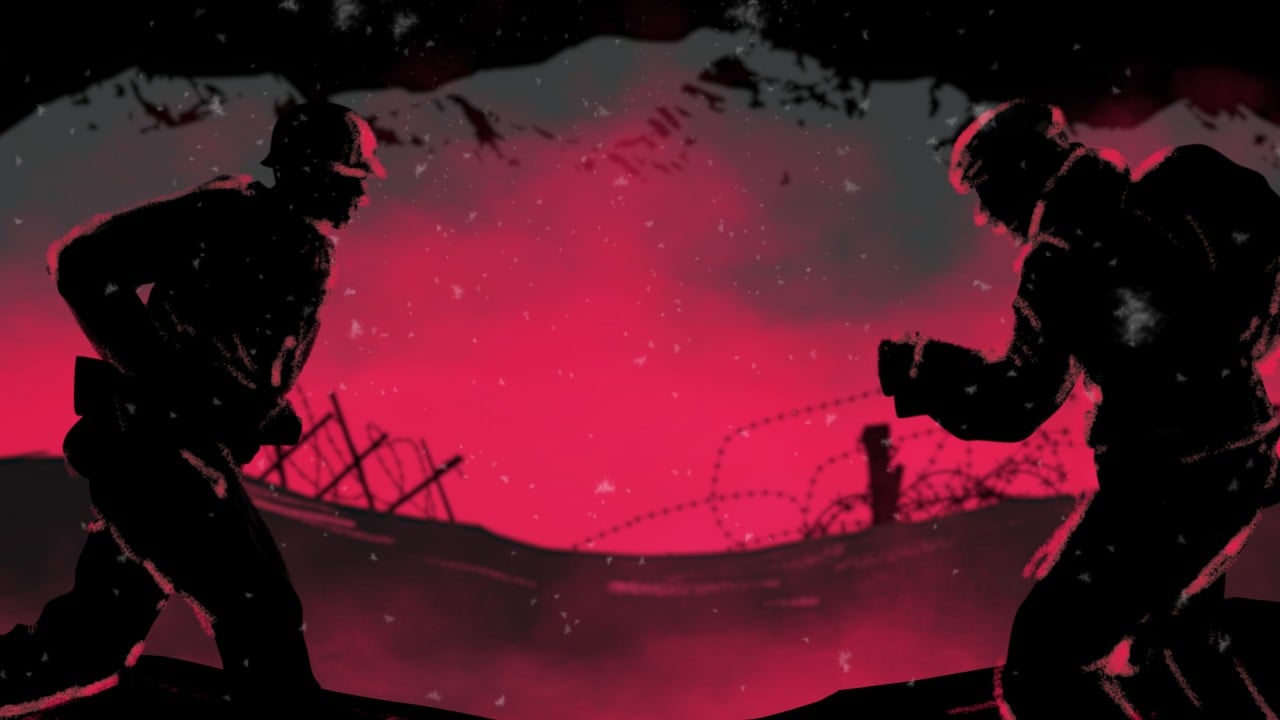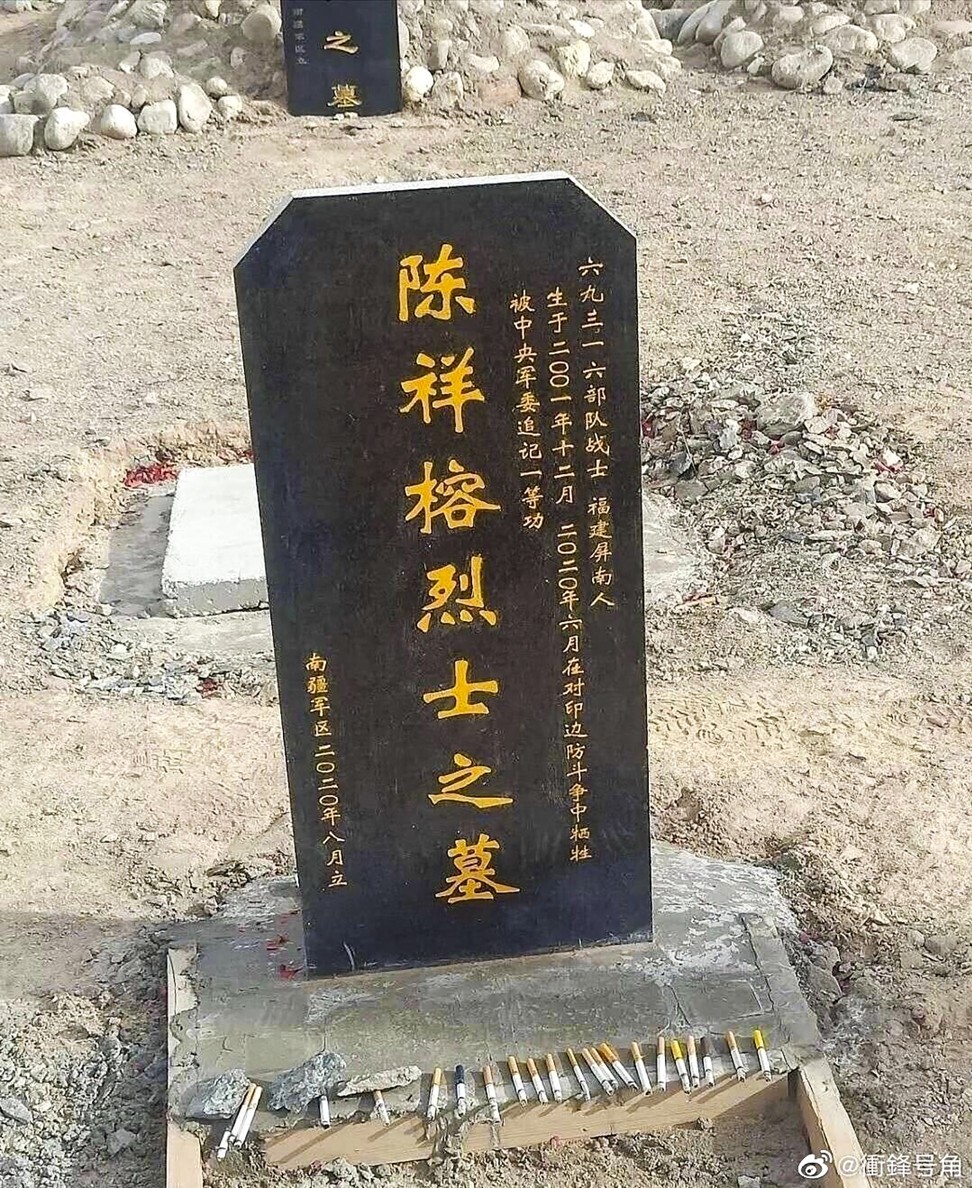
China-India border clash in June left four Chinese dead, one injured, report reveals
- Previously unknown details of deadliest encounter in over 40 years released as five soldiers honoured for their role
- PLA newspaper report says Indian troops ambushed the men on the Chinese side of the Line of Actual Control
China has for the first time revealed that four of its soldiers were killed, and one seriously wounded, in last year’s Himalayan border clash with India.

01:31
China shares video of deadly 2020 border clash with Indian troops in Galwan Valley
According to the report, which blamed India for the casualties without naming it, the deadly encounter was sparked by Indian troops crossing to the Chinese side of the Line of Actual Control between the two countries in the remote region.
The five PLA soldiers were described by the Central Military Commission as “heroes defending the border”, according to the report.

01:59
Death toll rises to 20 in border clash between India and China
Qi Fabao, the regimental commander from the PLA Xinjiang Military Command, who survived the incident, was given a hero award, along with battalion commander Chen Hongjun, who was honoured posthumously. Chen Xiangrong, Xiao Siyuan and Wang Zhuoran were posthumously given first-class merit awards.
According to the report, the soldiers had accompanied Qi in an attempt to negotiate in the disputed border area. They were waist-deep in a river crossing when they were “violently ambushed” by troops who outnumbered them and who “premeditatedly hid” and “tried to force the Chinese military to concede”.
The Chinese soldiers defended the sovereignty of the country amid attacks of “steel tubes, cudgels and stones”, the newspaper said. Qi organised his soldiers into combat formations and engaged, but sustained a serious head injury in the attack. According to military doctor Han Ziwei, Qi sustained an extended fracture to the left side of his forehead.
“As we were wrapping him up, he pulled off the bandage and tried to rush off to fight more. That was the last bit of strength left in him, and he passed out right after,” Han said.
Chen Hongjun – who left behind a pregnant wife – went to Qi’s rescue, while Chen Xiangrong fought on the front line. Xiao Siyuan, who was taking video evidence, also joined the battle. The three fought to the end, sacrificing their lives, according to the report. Wang Zhuoran lost his life crossing the river while saving other soldiers, it said.
“When facing enemies that outnumbered us, none of us flinched. Amid their stone attacks, we drove them away,” Chen Xiangrong, who later died from his injuries, wrote in his diary. The young soldier, who was just 18, shielded his superiors with his own body from the thrown rocks, which fell “like rainfall”, according to the report.

06:15
Who has the upper hand in the India-China border dispute?
The report quoted another soldier Chen Hongyu, who was not injured, who said Qi had yelled to the Indian troops that they had to bear the consequences of violating the border agreement. “Their troops just emerged from behind the cliff,” Chen said. “Even though we were fewer in number, we could not give in.”
“Since April 2020, relevant foreign military violated the previous agreement … they trespassed the border line to build roads and bridges and intentionally incited trouble, changing the status quo along the border. They even violently attacked Chinese soldiers that were sent for communication,” the PLA Daily said.
The clash was the worst border conflict between the two countries in over four decades and they remain locked in a military stand-off in the disputed region.
Last week, troops from both sides met on the banks of Pangong Lake – between Indian-controlled Ladakh and Chinese-controlled Aksai Chin – to begin the process of disengagement. The withdrawal is a positive sign for bilateral ties, but critics in India have described the process as “piecemeal”.
Chinese defence ministry spokesman Ren Guoqiang said China had decided to reveal the details of casualties on Friday to clear up rumours over the incident.
“The Indian Army illegally crossed the line and took the lead in provocation, attacking the Chinese and creating conflicts in the Galwan Valley. The Indian side was solely responsible for it,” he said. “The Indian side has repeatedly hyped up casualties and distorted the truth.”
History shows solution to China-India border dispute may lie with Xi and Modi
On Wednesday, India’s northern command chief Lieutenant General YK Joshi said the two countries had come close to a fully-fledged conflict for Ladakh’s Kailash Range heights in August, and that the June clash had caused serious casualties to the Chinese side.
“We were able to count a large number of casualties, which were being picked up on stretchers and taken back. More than 60 actually, but whether they were fatal or non-fatal, we can’t say with authority so I will not give a figure,” he said in an interview with Indian English-language broadcaster CNN-News18.
Lin Minwang, international studies professor at Fudan University and an expert in Sino-Indian relations, said postponing the announcement of Chinese casualties until the withdrawal started last week was a balancing act intended to deter relations from worsening.
Chinese, Indian troops saw ‘minor’ clash amid 9th round of border talks
“It’s a moral consideration, taking in the big picture and for the benefit of both sides, to avoid a complete relationship breakdown and from increasing hostility in public opinion,” he said. “After all, Indian troops suffered much larger casualties.”
The Chinese government has been under intense scrutiny for refraining from casualty announcements, Lin said, but it was a matter of geopolitical interest, with a resolution of the border conflict seen as a higher priority.
“It was actually highly controversial to delay acknowledging the casualties and the government also owed it to the sacrificed soldiers to properly honour them in public, so the announcement was just a matter of time,” Lin said. “The key was finding the right time to do it.”


